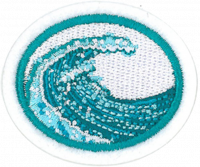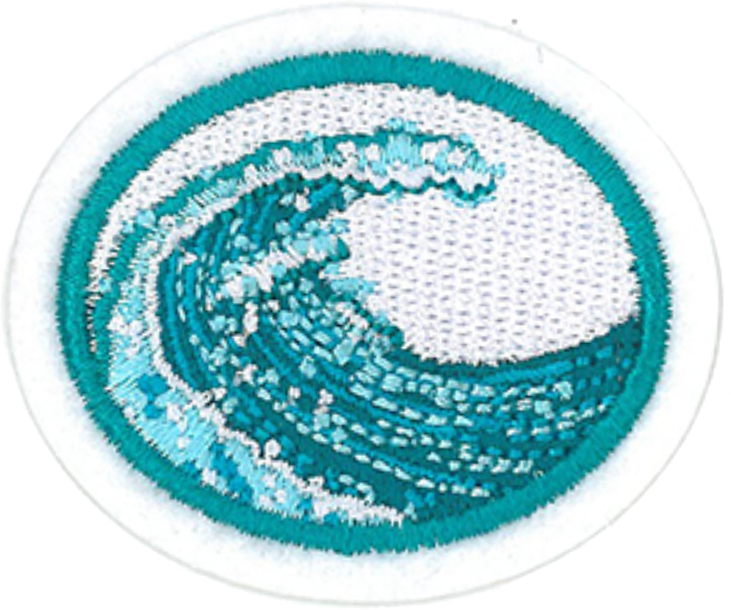Especialidades JA/Océanos/Requisitos
1. Contestar las siguientesː
- a. ¿Qué es un océano?
- b. ¿Cuál es la diferencia entre el océano y el mar?
- c. ¿Qué porcentaje de la tierra está cubierto de océano?
2. Completar lo siguiente con respecto a la salinidad:
- a. Definir salinidad.
- b. ¿Cuál es la salinidad del océano?
- c. Mezclar una solución que represente la salinidad del océano. Tomar una gota de su solución y probarla.
- i. ¿Por qué la salinidad del océano lo hace menos viable como agua potable?
- ii. Sembrar siete frijoles en un recipiente y otros siete en otro recipiente. Regar uno con agua dulce y el otro con la solución de agua salada que mezcló anteriormente. Evaluar el crecimiento después de siete días.
3. Etiquetar en un mapa en blanco el Océano Pacífico, el Océano Atlántico, el Océano Ártico, el Océano Índico, el Océano Austral, el Mar Mediterráneo, el Mar de Chukotka, el Mar de Filipinas y el Mar de la China Oriental. ¿Qué océano es el más grande? ¿Qué mar es el más grande?
4. Completar lo siguiente con respecto a las zonas del océano:
- a. Dibujar una sección transversal del océano y etiquetar las siguientes zonas del océano: zona intermareal, zona nerítica, zona oceánica, zona béntica, zona abisal, zona pelágica, zona afótica, zona fótica y plataforma continental.
- b. Explicar la diferencia entre la zona fótica y la zona afótica.
5. Completar lo siguiente con respecto al viento:
- a.
Describe what causes wind.
- b.
Explain what causes global wind patterns.
- c.
Define the Coriolis Effect.
- d.
Label the following wind currents on a diagram of the globe: polar easterlies, westerlies, trade winds, and doldrums. Identify the wind currents in the hemisphere where you live.
6.
Complete the following about tides:
- a.
What causes tides?
- b.
Describe the following types of tides: neap tides, spring tides, high tide, and low tide.
- c.
What dangers do tides present?
7.
Complete the following about ocean currents:
- a.
What are surface currents?
- b.
What are deep ocean currents?
- c.
What is a rip tide? How can you survive being caught in a rip tide?
- d.
On a blank world map, sketch the global conveyor belt.
- i. Use a blue writing utensil to represent the cold dense currents.
- ii. Use a red writing utensil to represent the warm less dense currents.
- iii. Label the oceans that the global conveyor belt passes through.
- e.
Conduct an experiment of your choosing that demonstrates how the global conveyor belt works.
- f.
What are tidal currents?
- g.
Explain why the part of the ocean along western Europe is warmer than other areas at the same latitude.
8.
How do oceans affect humans since we live on land?
9.
Complete the following regarding threats to the oceans:
- a.
Brainstorm a list of at least five of the greatest threats to our oceans. Compare your list with another reliable source.
- b.
Research the cause of each of these threats and list 10 actions you can take to help.
- c.
Write a plan for how you are going to act on one of your ideas. Implement your plan and report back to your instructor.
10.
Be able to identify at least two organisms from each kingdom (Animal, Plant, Fungi, Bacteria, Archaea, and Algae) that live in the ocean.
11.
Do one of the following:
- a.
Tell a Bible story that involves an ocean (or sea).
- b.
Write a song or poem comparing an aspect that you learned about oceans with a spiritual lesson.
- c.
Memorize two Bible verses pertaining to oceans (or seas).
12.
Do at least two of the following activities:
- a.
Watch a video about oceans or about the organisms that live in the ocean.
- b.
Visit a zoo or aquarium that has an ocean exhibit. Think about which oceanic zones the creatures you see would live in.
- c.
Put together a short video or slide presentation about what others are doing to help protect the oceans and its inhabitants from pollution. Include a few of your own ideas for helping the oceans.
- d.
Draw or paint a picture of something that you enjoyed learning while studying about oceans.
- e. Visitar un océano o mar. Observar lo que ha estudiado con respecto a las mareas, las corrientes, el viento y la vida silvestre.


